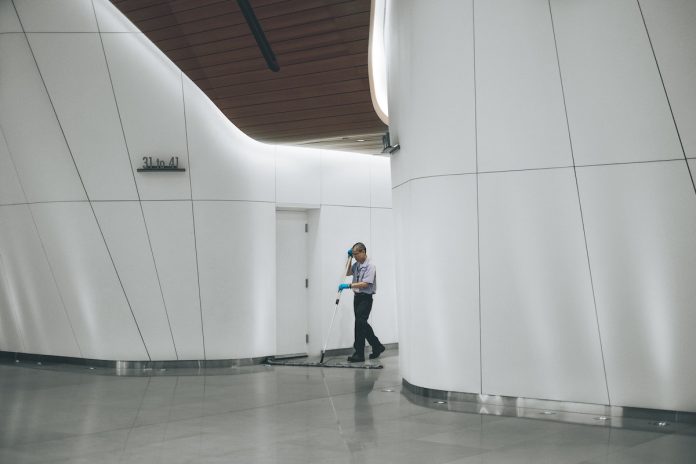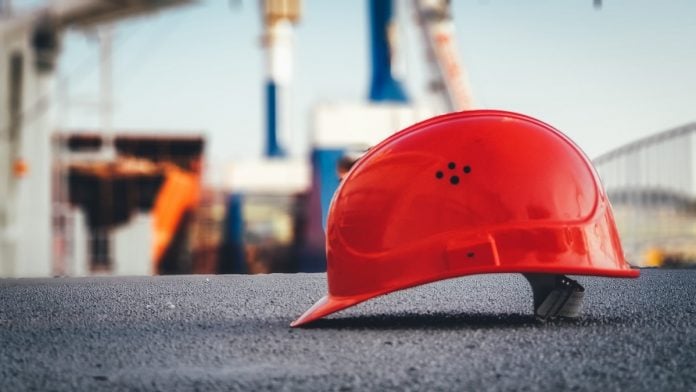Workplace Design: Tips For Reducing Slipping Hazards
Safety should always be at the forefront in the bustling world of workplaces. One often overlooked hazard that can lead to serious accidents is slipping. Slips and falls in the workplace not only cause injuries but can also result in costly legal consequences. This article explores essential tips for reducing slipping hazards in the workplace, focusing on creating safer environments and the role of a workers’ compensation lawyer.
Understanding Slipping Hazards
Slipping hazards are conditions or situations that make it easy for employees to lose their footing and fall. Wet or oily floors, uneven surfaces, worn-out footwear, or inadequate warning signs can cause these hazards. Understanding the gravity of slipping hazards is the first step in prevention.
Importance of Workplace Safety
Workplace safety is a crucial aspect of employee well-being and business success. Beyond the moral obligation, maintaining a safe workplace is economically prudent. When employees feel safe in their work environment, they are more productive and engaged, contributing positively to the company’s bottom line. Furthermore, businesses that prioritize safety are less likely to face costly workers’ compensation claims and legal liabilities.
Common Slipping Hazards
Before we delve into prevention strategies, let’s identify some of the most common slipping hazards in workplaces:
● Wet Floors: Wet or damp floors, whether from spills, leaks, or recent cleaning, can be treacherous. Employers should promptly clean up spills and use caution signs to alert employees. Adequate drainage systems should also be in place to prevent water accumulation.
● Uneven Surfaces: Uneven surfaces, such as ramps, thresholds, or damaged flooring, can pose tripping hazards. Regular maintenance and timely repairs are essential to address such issues promptly. Employers should prioritize floor leveling to eliminate uneven surfaces.
● Improper Footwear: Worn-out or inappropriate footwear can reduce traction, making employees more susceptible to slips. Employers should establish footwear policies that require slip-resistant shoes appropriate for the work environment. To incentivize compliance, consider offering discounts or subsidies for recommended footwear brands.
● Lack of Warning Signs: Inadequate signage fails to alert employees to potential dangers. Employers must ensure that warning signs are placed strategically, especially in high-risk areas. Additionally, regular inspections should include checking the visibility and condition of warning signs.
Designing a Safe Workspace
Creating a safe workspace involves proactive measures to reduce slipping hazards. By implementing tips for reducing slipping and also design strategies, businesses can minimize the risk of slips and falls:
Flooring and Surface Selection
Selecting suitable flooring materials is crucial. Consider the following:
● Non-Slip Flooring: Choose non-slip or slip-resistant flooring options for areas prone to moisture or spills. These surfaces provide better traction even when wet. Regularly check for wear and tear on mats or floor coverings, replacing them as needed.
● Easy-to-Clean Surfaces: Opt for easy flooring materials to clean and maintain. Regular cleaning helps remove dirt and substances that can make floors slippery. Employers should establish cleaning schedules and ensure that cleaning products effectively maintain non-slip properties.

Proper Signage and Warnings
Clear and visible signage is essential in alerting employees to potential slipping hazards:
● Warning Signs: Use warning signs to notify employees of wet floors, freshly waxed surfaces, or other hazards. Ensure that signs are easily noticeable and strategically placed. Regularly inspect and replace damaged or faded signs to maintain their effectiveness.
● Communication: Encourage open communication among employees regarding potential hazards. Establish a reporting system for identifying and addressing slipping risks promptly. Incentivize employees to report hazards by recognizing their contributions to workplace safety.
Footwear Policies
Employee footwear plays a significant role in preventing slips and falls:
● Footwear Requirements: Implement footwear policies that align with safety standards. Require employees to wear appropriate footwear that provides adequate grip and support. Offer information on recommended footwear brands or types suitable for specific job roles.
● Providing Options: Consider providing employees with slip-resistant footwear options. This ensures that everyone has access to suitable footwear, especially in industries requiring specific shoes. Collaborate with suppliers to offer a variety of choices.
Regular Maintenance and Inspections
Routine maintenance and inspections are essential to identify and address slipping hazards:
● Scheduled Inspections: Schedule regular inspections of workplace areas prone to slipping hazards. Identify and rectify issues promptly to prevent accidents. Maintain detailed records of inspections, including the date, findings, and actions taken.
● Maintenance Records: Maintain detailed records of maintenance activities, including cleaning schedules and repairs. These records can be valuable in documenting safety measures and ensuring compliance with regulations. Regularly review and update maintenance procedures to adapt to changing workplace conditions.
Employee Training
Educating employees about tips for reducing slipping hazards in the workplace is crucial:
● Recognizing Hazards: Train employees to recognize slipping hazards and take proactive steps to mitigate them. Provide real-life examples and scenarios to illustrate potential risks. Ensure that employees understand that safety is a shared responsibility.
● Safe Practices: Promote safe practices, such as walking cautiously on wet surfaces, using handrails on stairs, and reporting hazards promptly. Conduct regular safety training sessions and refresher courses to reinforce these practices. Encourage employees to participate in safety programs actively and offer incentives for their commitment to safety.
Workers’ Compensation and Legal Aspects
In the unfortunate event of a workplace accident, workers’ compensation plays a vital role in providing financial support to injured employees. Here’s where the role of a workers’ compensation lawyer comes into play:
Workers’ Compensation Benefits
Workers’ compensation is a system that benefits employees who suffer work-related injuries. These benefits typically include:
● Medical Coverage: Injured employees receive medical treatment for their injuries, including hospital stays, surgeries, and rehabilitation. Employers should ensure that employees know the medical coverage available to them.
● Wage Replacement: Workers’ compensation provides a portion of the injured employee’s salary while they are unable to work due to their injury. Employers should maintain open communication with injured employees and assist them in the wage replacement process.
● Vocational Rehabilitation: If necessary, vocational rehabilitation programs assist employees in transitioning to new roles if their injuries prevent them from returning to their previous jobs. Employers should collaborate with vocational rehabilitation services to support injured employees in career transitions.

The Role of a Workers’ Compensation Lawyer
A workers’ compensation lawyer specializes in handling cases related to workplace injuries. Their role includes:
● Claims Assistance: Assisting injured workers in filing workers’ compensation claims and ensuring all necessary documentation is complete. They work to expedite the claims process, helping injured employees receive prompt assistance.
● Legal Representation: Providing legal representation in cases where claims are denied or disputed, ensuring injured employees receive the compensation they deserve. Employers should inform employees of their right to legal representation and provide resources for accessing legal support.
● Legal Compliance: Ensuring that employers comply with workers’ compensation laws and regulations to avoid legal repercussions. Lawyers may also advise employers on safety measures and best practices to reduce future claims, promoting a safety culture within the organization.
Conclusion
In conclusion, prioritizing workplace safety by reducing slipping hazards is a business’s crucial responsibility. By understanding these hazards and implementing proactive measures, workplaces can minimize accidents, protect employees, and avoid costly legal consequences. Workers’ compensation and the assistance of a workers’ compensation lawyer provide essential support in case of accidents, ensuring employees receive the compensation they deserve. Creating a safe and hazard-free workplace benefits everyone, fostering a positive and productive work environment.
Pat Baker is a workers’ rights advocate, a champion of accessible spaces, and a writer for workers’ compensation lawyers in the Philadelphia area.






